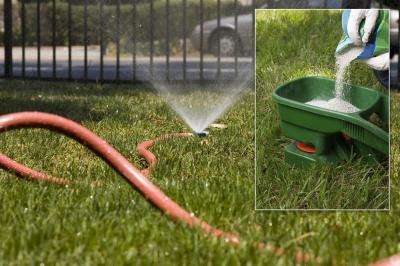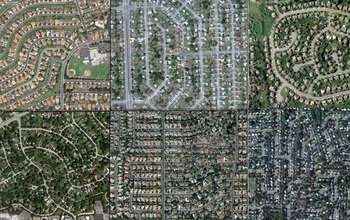Lawn care practices across the nation vary more than expected

How people care for urban, suburban and rural lawns – the nation's second biggest crop behind corn – is less consistent than believed, according to scientists with the U.S. Forest Service, Clark University, the Cary Institute of Ecosystem Studies and partners.
In a paper published today by the Proceedings of the National Academy of Sciences, scientists report that fertilizer and lawn irrigation practices by home owners of different age and economic groups varies not only across the nation, but even within the same city.
"Assessing the homogenization of urban land management with an application to US residential lawncare" is the first paper published on research that is examining what we do with our lawns and how we do it. A team of researchers completed telephone surveys with more than 9,500 homeowners across the metropolitan areas of Baltimore, Boston, Miami, St. Paul/Minneapolis, Los Angeles and Phoenix to compare lawn care practices in urban, suburban, and rural settings.
The paper is the first to dig into the concept of the "Urban Homogenization Hypothesis," an assumption that urbanization is creating landscapes that are indistinguishable despite regional differences in climate and vegetation.
For agencies and organizations involved in urban stewardship, the research suggests that one sustainability-sized message may not fit all when it comes to lawn care.
"Knowing how people are using fertilizer and water in Baltimore may not necessarily translate to understanding how people manage their lawns in the Twin Cities or Phoenix or Los Angeles," said Morgan Grove, a research forester with the U.S. Forest Service's Northern Research Station and a co-author of the study. "The answers are not a foregone conclusion."
Households included in the study were equally distributed across the six cities, which were chosen to reflect differences in local environmental conditions, such as climate, and along three social dimensions: population density, social economic status, and age.

Nationally, 63 percent of respondents reported fertilizing their laws, which is less variation by city than scientists expected given the significant differences in soil fertility across the six cities. The study suggests that fertilizing practices vary with population density and socio-economic status more strongly than they vary with life-stage or climate.
Seventy-nine percent of national respondents reported watering their lawns despite significant differences in average annual precipitation. Scientists found that irrigation practices vary with population density and climate more strongly than they vary with socio-economic status or life-stage.
"More than 80 percent of Americans live in urban areas and not only have a stake in improving the health and sustainability of cities, they have a significant role in helping sustain the health and resiliency of 138 million acres of urban forests," said Michael T. Rains, Director of the Northern Research Station and the Forest Products Laboratory. "Forest Service research is helping improve people's lives with innovative science and discovery that is literally relevant to the vibrancy of their own back yard."
The study demonstrates that when it comes to lawns, Americans are eager to contribute to science. When they began doing telephone surveys in the first phase of the project, researchers were hoping that out of the 9,500 people interviewed, 130 home-owners would allow researchers onto their property for a detailed survey of their lawns. They got 6,000 positive responses.
More information: Assessing the homogenization of urban land management with an application to US residential lawn care, www.pnas.org/cgi/doi/10.1073/pnas.1323995111
Journal information: Proceedings of the National Academy of Sciences
Provided by USDA Forest Service


















